RAIL Photography: PAUL BIGLAND
Day 3
Day 3 begins in the huge subterranean box under St Pancras that holds the Thameslink station. Ten years ago this didn’t exist, and passengers used the cramped old station on the Pentonville Road.
The operator, First Capital Connect , is a train operating company that really ‘gets it in the neck’ on Twitter, and it is easy to see why. I had planned to catch the 0848 to London Bridge, but it is 15 minutes late due to “electrical supply problems”, according to the robotic voice that constantly apologises for the delays.
FCC missed a trick here. A recorded apology lacks all sincerity - you simply don’t believe it. It would be far better to have a real person. The delays mean there are no southbound trains through this important artery for 18 minutes, so when a 12-car Class 377 does turn up, it is rammed!
I manage to squeeze aboard, and spend the journey people watching. A young lady knitting catches my eye, as it’s a rare sight nowadays. Despite the Android invasion, BlackBerries are still popular in the capital (several are in use), and there is even one city Gent playing chess on an iPad. Technology has really changed the way passengers spend their time nowadays, and commuter trains are no longer a sea of broadsheet newspapers.
At London Bridge I change trains, amid a scene that I’d never have imagined in 2004. In the shadow of the new 308-metre ‘Shard’, London Bridge station is having a massive makeover.
The old South Eastern trainshed has vanished. In its place new platforms and canopies are appearing, although it is going to be another four years before the makeover (including extensive track realignments) will be complete.
In all my years travelling I’ve never seen such a pace of change on Britain’s railways, and it’s fantastic to see so many major projects under way.
Catching the 0921 to Dover Priory, we scurry through south London and a cityscape where little has changed except the house prices. My destination is Sevenoaks, but only to catch the next Southeastern service back to London, which proves to be a very busy nine-car train.
It carries a welcome trolley service, so I treat myself to a coffee, served by a cheerful young chap who sings while he works. Southeastern is hardly a glamorous TOC (although it does have the impressive Javelin service), but it plays a vital, if unsung, role in the economy of the South East. The quality of its service is certainly far better than its predecessor, Connex.
Back in the capital, another change soon has me heading through north London on an FCC train to Bedford. Signs of investment are evident here, too. At Cricklewood, workers are occupied laying new sidings with controlled emission toilets facilities, to cope with the new Desiro City trains. Further out, near Harlington, a fourth track is being laid on the Up side, using recycled sleepers.
My train terminates at Bedford, where myself and a few fellow passengers transfer to East Midlands Trains, catching northbound 222009. This is another quiet train, and it is easy to find a table seat, set up my laptop and connect to the WiFi.
EMT’s Meridians have been refreshed recently. They are comfortable trains, and the run to Leicester is an enjoyable trip, as is the return on the 1251 to St Pancras. The weather has brightened and the train is quiet, so I eschew the WiFi and watch the world go by. My eye is drawn to the many rail overbridges that have been rebuilt, ready for route electrification.
We flash through Bedford non-stop, passing ranks of electric multiple units prepared for the evening rush and hopefully a better performance than the morning’s service.
Back at St Pancras I have time for a stroll through the undercroft, allowing me to take in the sights and sounds of this stunning station. Nowadays there is often a musical accompaniment, from several free pianos strategically placed to tempt the artistic. For me, St Pancras reflects all the huge changes we’ve seen recently, and it’s an absolute gem.
My next station cannot be more different - Marylebone. It’s hard to believe that this vibrant and thriving station was once considered for closure and the railway leading into it converted into a busway. Privatisation and the advent of Chiltern Railways has revitalised both the station and the routes radiating from it. I have never seen the place so busy.
I leave on the 1445 to Birmingham, worked by a Class 168 that shows signs of a recent graffiti attack (a problem that’s thankfully far less common here in the UK than elsewhere in Europe).
The train is very busy, made worse by selfish people taking up seats with their bags, ignoring both the needs of others and how packed the train is. One teenage girl is too lazy to put her bag on the rack, and leaves it across a pair of disabled priority seats, until a determined older gent forces her to move it.
Jammed up against the cab bulkhead, with little opportunity to see the scenery, leaves me watching people instead. Such as the chap opposite, who wears plastic gloves to slowly consume the contents of his lunchbox, while reading a nutrition magazine. The headline screams: “What doctors don’t tell you!”
A gaggle of girls opposite raise the volume in the coach with their chatter, leaving me mulling over the gratuitous use of words ‘like’ and ‘so’ (almost as punctuation) by the young.
A stop at Bicester, where contractors are busy building the new rail connection to Oxford, allows me to change trains and explore an attractive station. It is overshadowed by a massive double-deck car park packed with millions of pounds worth of expensive motors, which scream affluence.
Moving on, I board one of Chiltern’s new Class 172s to Banbury, where I find another station that has expanded and improved.
The footbridge has filled out with a cafe and new ticket barriers, while a new Eastern entrance opens out into another massive, multi-storey car park.
A trip to Oxford on a CrossCountry service follows. Like many of its services it is busy, but the train is clean and the Conductor who checks my ticket is well presented and friendly. The short hop takes mere minutes, and I am soon exploring a station that’s clearly too small and cramped for the role it plays today. However, plans are in hand to replace it, and to add extra platforms to improve capacity on this vital cross-country corridor.
Moving ever closer to London, my next stop is a place unrecognisable from 2004: Reading. I can think of few stations that have undergone such a massive rebuild and transformation. It really is impressive. But the work hasn’t stopped yet - electrification masts are springing up all around, at the town prepares for its new role as Crossrail’s Thames Valley terminus.
As my day is almost over, I take a break to soak up the sunshine (and a pint of real ale) outside the Three Guineas pub, which has taken over the old Great Western Railway station building.
Then it’s onto a fast First Great Western High Speed Train, heading to a bustling Paddington and journey’s end.
Day 4
Friday morning begins back at Paddington, only this time with a wheeled suitcase in tow, as it is time to leave London on the very same train as ten years ago - the 0915 to Cardiff Central. The train is packed as far as Reading, then empties out to comfortable levels.
We have a travelling chef on board, which tempts me to try the cooked breakfast. And to test the chef’s culinary skills, I order it with scrambled eggs. The result is a pleasant surprise - the food is hot and tasty, although the cardboard box it’s served in lacks the elegance you’d hope for.
The miles speed by as I munch my breakfast. At Wallingford the first electrification posts appear, which draws my attention to the miles of sunken steel piles that are already in place to take them. It’s great to see the progress being made, although the photographer in me can’t help feeling sad at the loss of some great lineside picture spots.
My train is running late, and an unscheduled halt outside Newport makes me anxious, as I have a lot of ground to cover and cannot afford to be delayed. This anxiety proves to be my undoing...
We pull into Cardiff Central next to a Valley Line train. A rapid exit and a mad dash through the subway allow me to catch it with moments to spare. Congratulating myself, I start to take pictures on the train as we climb up the incline to Queen Street. Then I remember my suitcase - and it suddenly dawns on me I have left it on the other train!
Another cross-platform change at Queen Street and a return to Central mean it isn’t only diesel fumes that are turning the air blue! But it is too late - the HST had already left, leaving me no option but to explain my predicament to the station staff.
They have heard it all before, and reassure me that my train will return from the sidings within 20 minutes. Sure enough, when it does, the cleaners have found my case and we are reunited. That’ll teach me to be clever!
Running late now, I finally reach my goal - Pontypridd station. Ten years ago I described the white tiled waiting room, with its mesh windows, as “as welcoming as an abattoir”. Has it changed? You bet!
Already modernised, the station is in the throes of a further £6 million refurbishment that includes a new entrance, forecourt and extra platforms. The dismal waiting room has vanished, replaced with a light, airy wooden-panelled room where the walls are covered with colour photos of Wales. There is also plenty of seating. It is lovely to see, but leaves me with one less contender for the title of Britain’s worst station...
Back at Cardiff Central, there is enough time to have a quick look around, take some pictures, and dive onto the 1330 to Portsmouth Harbour for a trip to Westbury via Bristol Temple Meads. This is a three-car FGW Class 158. Mercifully, for such a warm day and a packed train, the air-conditioning is in fine fettle. At Bristol we swap one mass of passengers for another, before heading off to Bath and Westbury.
At this point in the journey, I have a confession to make. For the past decade I’ve had a secret… I killed a train service!
In 2004, I travelled this route because Wessex Trains had hired in top-and-tail Class 31s and old Mk 2 coaches to run a holiday relief service funded by the Strategic Rail Authority. My report wasn’t very kind. The Mk 2s were shabby and dirty, the trolley service sold mouldy food, and it wasn’t liked by passengers who struggled with its slam doors.
After my article was printed, RAIL’s Philip Haigh rang me and said: “Do you know you’ve killed it? I’ve been chatting to the SRA. They read your article and decided to pull the plug on funding.”
Hopefully it’s safe to come clean now, and RAIL’s postbag won’t be full of irate letters from fans of locomotive haulage.
Like in 2004, my journey ends at Westbury. Unlike in 2004, the station shop isn’t run from two sheds, and the passenger facilities are much improved. And a fortuitous connection with a late-running Paddington train gives me the opportunity to get some pictures and make up some time.
As the train pulls in I can see it is packed to the gunwales, but a large group gets off, leaving space for me. As we leave, the Guard uses the PA to apologise for the fact that the lateness is due to overcrowding. Despite this and the earlier suitcase-based excitement, I have gained an hour on my schedule, so I am able to catch an earlier train from Euston to Glasgow.
In 2004 I used the Sleeper train, but on this trip it has proved impossible to get a berth. So on the Friday afternoon, I find myself waiting at a packed Euston concourse for the 1730, which is late because the inbound working has been delayed.
Euston on Fridays is like a Le Mans racing start, as everybody who doesn’t have a reservation runs like the clappers to try and bag a seat, myself included... Winning the race and bagging a seat, I settle down for the trip by plugging in my laptop and trying to log onto the WiFi, but it isn’t playing ball. Virgin’s WiFi is clearly in need of an upgrade.
Still, I am kept occupied by my phone, as I had tweeted about how busy Euston was. This has drawn angry responses from those opposed to HS2, who are in full-on denial mode!
It is a long journey, but a pleasant one. The Pendolinos have become reliable trains with great performance. It’s always a pleasure to tilt around the sweeping curves at Wolverton in one.
Signal problems south of Weaver Junction delay us further, leaving the train 14 minutes late at Preston, but the Train Manager is good at keeping us updated. Heading through the beautiful Lune Gorge, the evening sunshine displays it at its best, while north of Carlisle the setting sun we are chasing is stunning.
The trip is thoroughly enjoyable, but it has been an eventful day, and I am keen to get to Glasgow Central and a night in the gorgeous station hotel (yet another building that has been the recipient of a stylish makeover since 2004). And yes, I have remembered to bring my suitcase!
Day 5
Beginning a day at Glasgow Central is always a pleasure, as Scotland has some lovely stations and Central is one of the gems in the crown.
There’s an old joke that Glaswegians are the only people who can make hello sound like a threat, but I’ve always found it a welcoming and fun city. The city is about to host the Commonwealth Games, imbuing the place with a real buzz and a feeling of anticipation.
A sampling of ScotRail services sees me take a circular trip from the Low Level station out to Dalmuir for a change of trains, before returning via Hyndland to Queen Street Low Level. And ScotRail doesn’t fail to impress. All the trains are clean; staff are keen to check tickets; and all the stations are immaculate, with cleaners busy making sure they stay that way.
Back at Central, I am in time to catch the 1012 to Dumfries, for a trip along the Glasgow South Western route. The line through the Glasgow suburbs takes us through several attractive stations. Many, such as Barrhead, have lovely floral displays. My only complaint is that we are brought to a stand outside the station for several minutes, then set off again without any explanation offered, which is a shame.
The GSW route is a pretty line, even though it lacks the rugged grandeur of its Highland cousins. It still has sections of semaphore signalling and old signalboxes at locations such as Lugton, and there’s always something of interest at Kilmarnock, where the Wabtec Rail works attracts unusual and exotic vehicles.
My own journey becomes more ‘exotic’ at Auchinleck, where a hen party of 14, of all ages and sizes, and decked out in the obligatory sashes and skimpy tops proclaiming their rank, are waiting to catch the train. I am soon surrounded by a laughing group who immediately break out cans of strong cider, bottles of lager and cans of gin and tonic, and proceed to make merry! As the journey progresses, their heavy Scottish accents are made even more impenetrable by the alcohol.
At Kirkconnel, a group of middle-aged blokes get on, and banter soon breaks out between the two camps when it turns out the men are on a stag do! Although boisterous, the women aren’t badly behaved, and they even pose for a picture when they see my camera and hear what my mission is.
Being a weekend, the dreaded ‘bustitution’ strikes at Dumfries, and we transfer to road coaches for the final leg into Carlisle.
Leaving the coach, the unmistakable notes of a chime whistle catch my ears, announcing that a Gresley A4 Pacific is in town. Rushing into the station, I am just in time to see 60009 Union of South Africa running round the ‘Cumbrian Mountain Express’.
Carlisle is a bit of a timewarp on this day. Shortly after, two vintage British Rail diesels (a Class 20 and a ‘47’) rumble through, followed by a pair of West Coast ‘37s’. In complete contrast, one of the UK’s newest locomotives (a Colas Rail ‘70’) sits in the sidings.
My ‘gricing’ is cut short when a pair of TransPennine Express ‘350s’ arrive from Scotland to whisk me south. The diesel Desiros are comfortable trains (when you can get a seat), but the Desiro EMUs offer much needed extra capacity.
Being new trains, they are in good condition, and I enjoy the journey down to Oxenholme, which is a lovely, well maintained little station looked after by Virgin Trains. I have only a few minutes to admire the place before Pendolino 390013 arrives, packed with passengers and luggage. A vacant perch seat suffices for the short trip to Preston, where I transfer to a Northern Rail train to Burscough Junction.
This former Lancashire & Yorkshire main line to Liverpool is single-track nowadays. It’s a bit of a Cinderella line that is normally worked by single-car Class 153s, although the one I catch is both clean and very busy.
The line may be a backwater, but it has not been neglected by the locals. At Croston, for example, a local station friends groups has been busy restoring and planting out the derelict Preston-bound platform.
Arriving at Burscough, I deviate from my original route by returning to Halifax for a rare night at home, before my final two days documenting a decade of change. What would I find next?
In RAIL 759, in the third and final part of Paul’s All-Line Rover journey, he revisits the station he labelled as Britain‘s worst.
- This feature was published in RAIL 758 on 1 October 2014
Read All-Line Rail Rover Part 1 and All-Line Rail Rover Part 3.

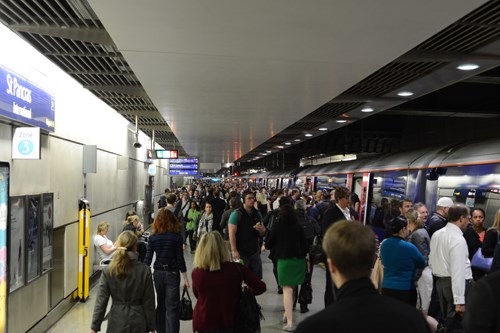
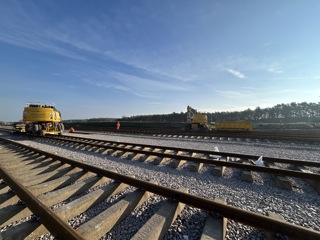
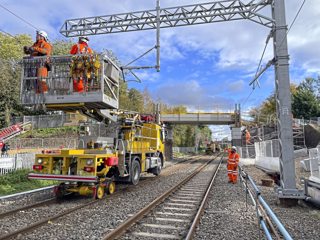

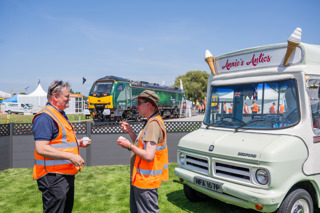
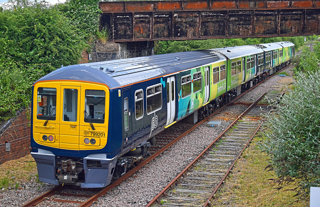











Login to comment
Comments
No comments have been made yet.